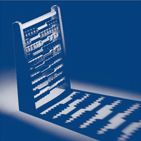VAT Flat Rate Scheme
Background
Smaller VAT registered businesses can join the Flat Rate scheme for VAT, if the turnover of the business does not exceed a £150,000 threshold. In the Flat Rate Scheme, in very broad terms, VAT is added to sales invoices in the usual way but a lower percentage is paid over to HMRC and this rate depends on the business activity.
The difference between the main rate of VAT (20%) and the flat rate is then part of the taxable profit of the business, therefore a lower the flat rate percentage leads to higher profit. For newly VAT registered businesses, this saving is enhanced as the flat rate is reduced by 1% for the first 12 months.
In return for the beneficial treatment on output VAT, VAT incurred on purchases and expenses cannot be recovered except on capital assets with a value (including VAT) over £2,000.
How is it beneficial?
In addition to reducing administrative burdens, the flat rate scheme can lead to a lower VAT bill.
By way of a simple example, a VAT registered business with turnover of £149,000 per year and VAT incurred on expenses of only £500 annually, considers the flat rate scheme.
An examination of the various categories under the flat rate scheme shows there is no specific category for the type of business being carried out so the business applies for the 12% rate as an activity that is not listed elsewhere.
By adopting the flat rate scheme, the annual VAT bill will be calculated as follows:
Gross turnover (£149,000 × 1.2) × 12% flat rate = £21,456
In the absence of the flat rate scheme the VAT bill would be:
Output tax (£149,000 × 20%) = £29,800
Input tax = £500
Payable = £29,300
The net VAT saving is £7,844 per year (£29,300 less £21,456).
What are the pitfalls?
There are complications to the scheme, for example the wrong business category could be chosen – which is explained below. In addition, the flat rate must be paid on certain supplies which would normally be exempt, for example, the sale of a car, sales of property and exempt sales such as residential letting which can lead to complications.
Who can apply?
Flat rate scheme only applies to VAT registered businesses where turnover does not exceed £150,000 exclusive of VAT. Other exclusions apply, such as businesses that have to operate the capital good scheme.
For many small businesses where customers can re-claim the VAT charged, this scheme is beneficial. However, where a business makes a lot of exempt, zero-rated or reduced-rate supplies, the scheme is not likely to be beneficial.
Broadly, once the annual turnover of the business exceeds £230,000 (inclusive of VAT) then it must leave the scheme. In addition, a business cannot join if it is closely associated with another business, for example, both businesses are under the same control of another, or they share financial, economic and organisational links.
Which rate applies to my business?
There is a list of 55 different categories, listed in the following link:
https://www.gov.uk/vat-flat-rate-scheme/how-much-you-pay
How to choose a flat rate category?
It is up to the business to decide which category is appropriate for them. HM Revenue & Customs cannot challenge this decision so long as the choice was reasonable and records are kept to explain how the decision was arrived at.
What if the wrong category has been chosen in the past?
HMRC can change the flat rate percentage used if it discovers that another category is more appropriate but this change cannot be backdated so long as the original decision was reasonable.
If the business discovers that a more appropriate category applies, then it can also change. Similarly to HMRC, in order to backdate the change, the business will have to prove that the first decision was unreasonable.
A recent case concerned a mechanical engineering company, which relied on Revenue guidance in choosing a flat rate category. Originally the company chose the rate of 14.5% for “Architect, civil and structural engineer or surveyor” based on HMRC guidance which was subsequently found to be incorrect. The Revenue then agreed that the company should have been registered under “Any activity not listed elsewhere” with a 12% flat rate. The company had to take HMRC to a tribunal to be able to back date the change in percentage by 4 years (the maximum available to correct errors on VAT returns), leading to a VAT repayment for the company.
The flat rate scheme can bring a number of benefits but it will not suit all businesses and the category should be chosen carefully. If you are considering the scheme or if you consider that your current category is not appropriate then please contact our Tax Director, Jenny Marks.
To see our other news items please visit our Muras Baker Jones – Blog.



